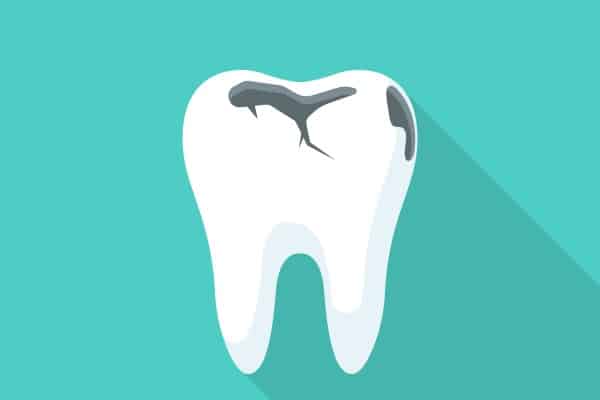Does Every Cavity Need a Dental Filling?
A dental filling is a common treatment option for cavities. Even after trying hard to prevent tooth decay, the dentist may find a few small cavities. You may be tempted to put off tooth decay treatment when you are not experiencing any pain. This is not a good idea because it can lead to other serious problems. Treating a cavity is also usually less painful when it is done early or as soon as your dentist detects signs of decay.
Dental filling
Tooth decay starts by softening the outer layer of a tooth called enamel. If left untreated, it could eventually become a cavity. Even if a person has small cavities, they need to be filled as soon as possible. But if decay is caught early enough, there are several options available that can help a person avoid a filling.
Fluoride varnish or gel
Fluoride is an element that helps to slow the progress of tooth decay. Fluoride treatment may involve the application of fluoride gel. It is often placed in a tray and kept in the mouth for a while as the enamel absorbs the fluoride before the tray is removed. Fluoride varnish can also help prevent tooth decay or stop it from getting worse. This is a liquid that is painted onto the teeth, which hardens quickly into a thin layer as the fluoride is absorbed by the enamel.
High-fluoride toothpaste
Dentists usually recommend using toothpaste containing fluoride. Sometimes, a dentist may prescribe toothpaste that has a higher concentration of fluoride. This kind of toothpaste is usually recommended when the decay leaves the root exposed. Using high-fluoride toothpaste regularly can help prevent further decay from occurring.
Dental sealants
Decay usually targets the back of teeth since they have deep pits and grooves that trap food particles and plaque. To prevent this problem, the dentist may recommend dental sealants. A sealant is basically a protective coating that is placed on the chewing surfaces of back teeth. Dental sealants will cover the grooves and pits and help eliminate any places for bacteria to collect.
Silver diamine fluoride
If tooth decay has advanced to form a cavity, the dentist may also consider silver diamine fluoride (SDF). SDF is an effective treatment that is applied directly to the area of decay. It can stop the decay from continuing without filling the cavity in. It is a quick and affordable option that is often ideal for younger patients who are not comfortable with a drill.
Benefits of a dental filling
A dental filling is an artificial material that can repair cavities, cracks, and chips. It can bring back the structure of the tooth. This quick treatment can make a difference in the patient’s dental health. Below are the benefits of a dental filling:
- It has lasting results. The patient can choose porcelain, composite resin, plastic, or gold. Each filling material has its own longevity. Porcelain or gold fillings are expensive, but the patient can get 15 years of dental support. The other types of fillings will last for at least 10 years with proper care and maintenance.
- It can stop the progress of decay. A dental filling can stop the decay from worsening. That is why a cavity needs to be filled right away. Without a filling, the cavity will keep growing. The tooth’s structure will weaken even more.
- It looks like natural teeth. Fillings along the front of the teeth are often tooth-colored. The dentist will match the dental filling’s color to the color of the natural teeth. Cavities in the back teeth can receive gold fillings. The color of this dental filling will not attract negative attention at all if it is hidden in the back.
- It improves the function of teeth. Decayed teeth make it difficult for an individual to eat, drink, and even speak. A dental filling can solve the problem right away. It can restore the tooth’s structure and protect the sensitive dentin. The filling can even protect the tooth from future decay or damage.
Types of dental fillings
Dental sealants and topical fluoride treatments can help you to prevent a cavity from forming and avoid a dental filling. But if you are not able to catch the tooth decay early, a dental filling may be a viable treatment option. Fortunately, there are more types of dental fillings available than ever before. These include amalgam, composites, gold, or porcelain. These differ in looks, longevity, durability, and price point. Your dentist can help you choose the ideal type of filling or treatment plan for your cavity.
Request an appointment here: https://mbdentalatheights.com or call MB Dental at Heights at (281) 885-8608 for an appointment in our Houston office.
Check out what others are saying about our dental services on Yelp: Composite Fillings in Houston, TX.
Related Posts
6 Factors To Consider When Choosing A Cosmetic Dentist
Thinking about choosing a cosmetic dentist? Read on to learn more about what to consider during your search. To many patients, cosmetic dentistry is primarily a cosmetic enhancement. However, it often intersects with overall dental health. Therefore, it is important to consider several aspects before settling on a cosmetic dentist.Cosmetic dentists do more than enhance…
What You Need To Know About Dental Implants
As a patient considering dental implants, there are some important things that you need to know. Dental implants are a popular and effective way to replace missing teeth, but they require careful consideration and planning to ensure their success. This article will go over the basics of dental implants and what you can expect from…
The Pros And Cons Of Dental Implants
Dental implants are an increasingly popular choice for individuals with missing or damaged teeth. They offer a variety of benefits over traditional dentures or bridges. However, they can also come with challenges, and not everyone will benefit from the procedure. This article will explore the pros and cons of dental implants to help you make…
The Process Of Getting A Dental Implant After A Tooth Extraction
Most people want to have dental implants right after dental extraction. Replacing the lost tooth is a priority. This can prevent more complications as the mouth heals. Understanding the process of getting implants after dental extraction can help prepare you for your appointment. Here are the details about getting dental implants after a dentist removes…

